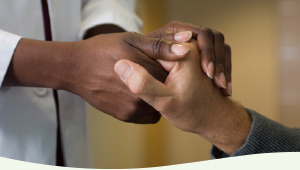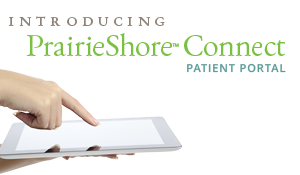Headache
According to the National Headache Foundation, more than 45 million Americans suffer from chronic, recurring headaches. About 20 percent of children and adolescents also have significant headaches. About 70% of headache sufferers are women. There are many types of headaches and various ways to treat them.
Tension headache
When you get a tension headache, you may have a constant, aching pressure that feels like a band around your head. This is the most common type of primary headache and pain tends to be mild to moderate, non-throbbing, and on both sides of the head. It usually does not get worse during routine activities like bending over. Triggers can include eye strain, depression, stress, poor posture, or too little rest. Because tension-type headaches tend to be mild, patients usually treat them successfully with over-the-counter medications. However, using over-the-counter medications too often can lead to a different type of headache: chronic daily headache or rebound headache.
If you seek medical attention, your doctor may prescribe drugs, such as the antidepressant amitriptyline, or relaxation techniques. They can reduce the number of headaches you get and make them less severe. They can also prevent the headache from starting.
Migraine headache
This is the second most common type of primary headache. The exact cause of migraines is unknown, although they are associated with changes in brain structure, in the nerves and blood vessels of the head, and in inherited abnormalities in certain areas of the brain. Migraine pain is moderate to severe, pounding or throbbing in nature, typically lasts from 4 hours to 3 days, and usually occurs 1 to 4 times per month. Migraine symptoms may include sensitivity to light, noise or odors; blurry vision, nausea or vomiting; loss of appetite; and stomach upset or abdominal pain. Migraines tend to run in families. There are many different triggers for migraines, depending on the individual.
Migraines may be relieved from over-the-counter drugs that contain acetaminophen, aspirin, caffeine, ibuprofen, or naproxen. If over-the-counter meds don’t help, you might need stronger prescription drugs. Some prevent attacks, while others can stop a migraine if you take them at the first signs that one is starting up.
Your doctor may also give you medicine to get rid of nausea from migraines.
Other therapies that can help include:
- Hormone therapy for women whose migraines are linked to their menstrual cycle
- Relaxation in a dark, quiet room
- Stress management, including exercise and biofeedback
Cluster headaches
This is the least common, but most severe, type of primary headache. The pain of a cluster headache is intense and has a burning or piercing quality that is throbbing or constant. The pain is so severe that most cluster headache sufferers cannot sit still and will often pace during an attack. The pain is located behind one eye or in the eye region, without changing sides. The term “cluster headache” refers to headaches that come in a group, or cluster. Cluster headaches occur one to three times per day during a cluster period, which may last 2 weeks to 3 months. The headaches may disappear completely (go into “remission”) for months or years, only to recur.
Secondary headaches
Secondary headaches are those that result from another medical condition and include sinus headaches, medication overuse headaches, or headaches that occur because of a head injury, trauma, or more serious condition such as a tumor.
Sinus headaches are associated with a deep and constant pain in the cheekbones, forehead, or bridge of the nose. The pain usually gets worse with sudden head movement or straining and occurs with other acute sinus symptoms, such as nasal discharge, foul taste in the mouth, feeling of fullness in the ears, fever, facial swelling.
Medication overuse headaches occur as a result of the overuse of either readily available over-the-counter or prescribed painkillers, such as opiates and sedative hypnotic tablets designed for headache management (butalbital-containing headache remedies). This is the most common type of chronic headache seen in specialty headache centers. Tension-type or migraine headaches that are intermittent can transform into a chronic headache from the inappropriate “overuse” of medications. These headaches can also happen without the overuse of analgesics.
Evaluation and diagnosis
The good news for headache sufferers is that once a correct headache diagnosis is made, an effective treatment plan can be started. If you have headache symptoms, the first step is to go to your family physician. He or she will perform a complete physical examination and a headache evaluation. During the headache evaluation, the doctor will consider your headache history and the description of the headaches. You will be asked to describe your headache symptoms and characteristics as completely as possible. You should establish a reasonable time frame with your family physician to evaluate your headache symptoms.
A headache evaluation may include a CT scan or MRI if the doctor thinks there might be a problem with the central nervous system. Both of these tests produce cross-sectional images of the brain that can reveal abnormal areas or problems. Skull x-rays are not helpful. An EEG (electroencephalogram) is also unnecessary unless you have ever passed out during a headache.
If your headache symptoms become worse or become more frequent despite treatment, ask your family physician for a referral to a specialist.
Treatment
Determining the proper treatment for your headaches will depend on several factors, including the type and frequency of the headache as well as its cause. Your doctor or specialist will prescribe a treatment plan that is tailored to meet your specific needs. This may include education, counseling, stress management, biofeedback, and medications.
Education
Headache education includes identifying and recording what triggers your headache, such as lack of sleep, not eating at regular times, eating certain foods or additives, caffeine, environment, or stress. Avoiding headache triggers is an important step in successfully treating the headaches.
Counseling
Counseling in the form of one-on-one sessions, group therapy, or support groups can help you identify your headache triggers and teach you useful coping techniques.
Stress management
To successfully treat headaches, it is important for you to identify what causes or triggers the headaches. Then you can learn ways to cope or remove the stressful activities or events. Relaxation techniques are helpful in managing stress and include deep breathing exercises, progressive muscle relaxation, mental imagery relaxation, or relaxation to music. Ask your healthcare provider for more information about these techniques.
Biofeedback
Biofeedback equipment includes sensors that are connected to your body to examine how your body responds involuntarily to headaches. It measures things like your breathing, pulse, heart rate, temperature, muscle tension, and brain activity. By learning to recognize these physical reactions and how your body responds in stressful situations, biofeedback can help you learn how to release and control tension that causes headaches.
Medication
There are three types of headache medication that your doctor may prescribe. These include medications designed to give you symptomatic relief, stop a headache at the onset, or prevent headaches from occurring. Again, your doctor will prescribe the treatment according to your specific needs.
Tracking your progress
When your doctor starts a treatment program, keep track of the results and how the treatment program is working. Keep your scheduled follow-up appointments so that your doctor can check your progress and make changes in the treatment program as needed. Keeping a headache diary can be extremely helpful to measure progress, or the lack of progress.
At PrairieShore™ Pain Center, our goal is to relieve your pain and improve your quality of life. If your primary physician has advised you to see a specialist for your pain, turn to us for help. To schedule your appointment, please contact us here or give us a call at (847) 883-0077.







